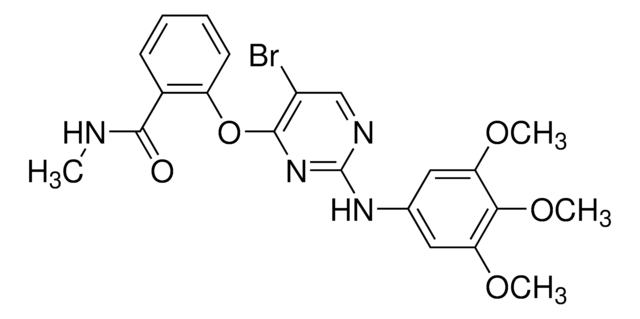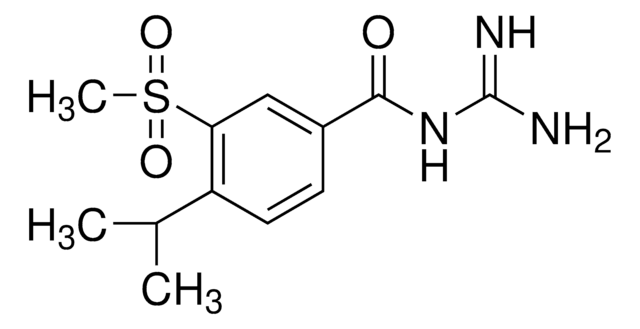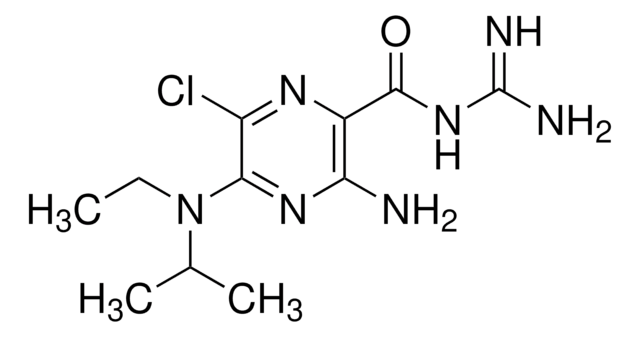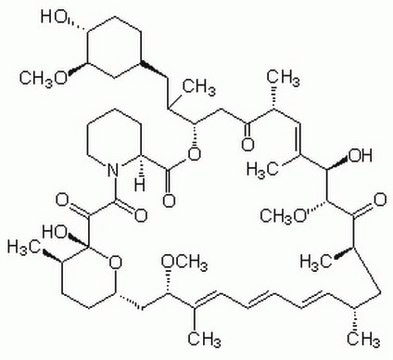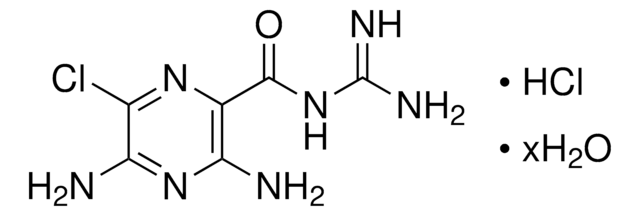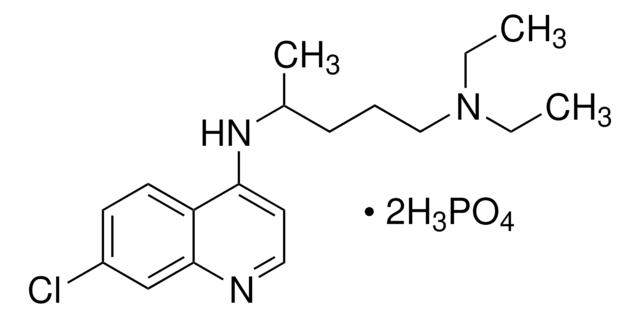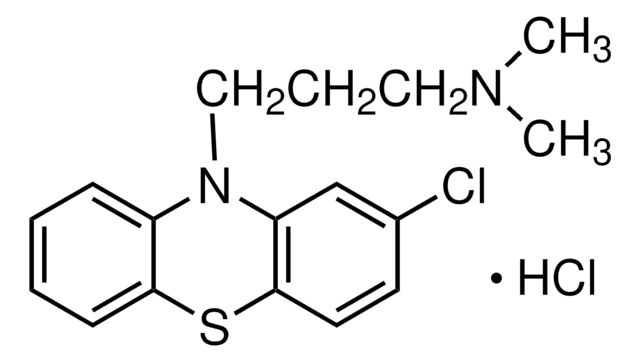SML1996
S3226
≥98% (HPLC)
Synonym(s):
3,3′-(4-Methyl-1,2-phenylene)bis[N-(aminoiminomethyl)-2-methyl-2-propenamide] dihydrochloride, S 3226, S-3226
Sign Into View Organizational & Contract Pricing
All Photos(1)
About This Item
Empirical Formula (Hill Notation):
C17H22N6O2 · 2HCl
CAS Number:
Molecular Weight:
415.32
UNSPSC Code:
12352200
Recommended Products
assay
≥98% (HPLC)
form
powder
color
white to beige
solubility
H2O: 2 mg/mL, clear
shipped in
ambient
storage temp.
2-8°C
SMILES string
O=C(N=C(N)N)C(C)=CC1=CC(C)=CC=C1C=C(C)C(NC(N)=N)=O.[H]Cl.[H]Cl
Biochem/physiol Actions
S3226 is a potent and selective NHE3 (NHE-3) inhibitor (IC50 = 20 nM/human NHE3, 3.6 μM/human NHE1, 80 μM/rabbit NHE2) for studying NHE3 physiological as well as pathophysiological roles in kidney and gastrointestinal disorders in vitro and in animal models in vivo.
S3226 is also known as {3-[2-(3-guanidino-2-methyl-3-oxo-propenyl)-5-methyl-phenyl]-N-isopropylidene-2-methyl-acrylamide dihydro-chloride}. S3226 is used to explore the physiological and pathophysiological functions of sodium-hydrogen exchanger 3 (NHE3) in animal models. It is a bismethacryloyl guanidine derivative.
Storage Class
11 - Combustible Solids
wgk_germany
WGK 3
flash_point_f
Not applicable
flash_point_c
Not applicable
Certificates of Analysis (COA)
Search for Certificates of Analysis (COA) by entering the products Lot/Batch Number. Lot and Batch Numbers can be found on a product’s label following the words ‘Lot’ or ‘Batch’.
Already Own This Product?
Find documentation for the products that you have recently purchased in the Document Library.
S3226, a novel inhibitor of Na+/H+ exchanger subtype 3 in various cell types
Schwark J R, et al.
Pflugers Archiv : European Journal of Physiology, 436(5), 797-800 (1998)
J R Schwark et al.
Pflugers Archiv : European journal of physiology, 436(5), 797-800 (1998-08-26)
Inhibition of Na+/H+ exchange (NHE) subtypes has been investigated in a study of the mouse fibroblast L cell line (LAP1) transfected with human (h) NHE1, rabbit (rb) NHE2, rat (rt) or human (h) NHE3 as well as an opossum kidney
Hiromitsu Miyazaki et al.
BMC physiology, 17(1), 1-1 (2016-08-16)
Disturbance of acid-base balance in the inner ear is known to be associated with hearing loss in a number of conditions including genetic mutations and pharmacologic interventions. Several previous physiologic and immunohistochemical observations lead to proposals of the involvement of
Jennifer Foulke-Abel et al.
Gastroenterology, 150(3), 638-649 (2015-12-19)
Human intestinal crypt-derived enteroids are a model of intestinal ion transport that require validation by comparison with cell culture and animal models. We used human small intestinal enteroids to study neutral Na(+) absorption and stimulated fluid and anion secretion under
Our team of scientists has experience in all areas of research including Life Science, Material Science, Chemical Synthesis, Chromatography, Analytical and many others.
Contact Technical Service